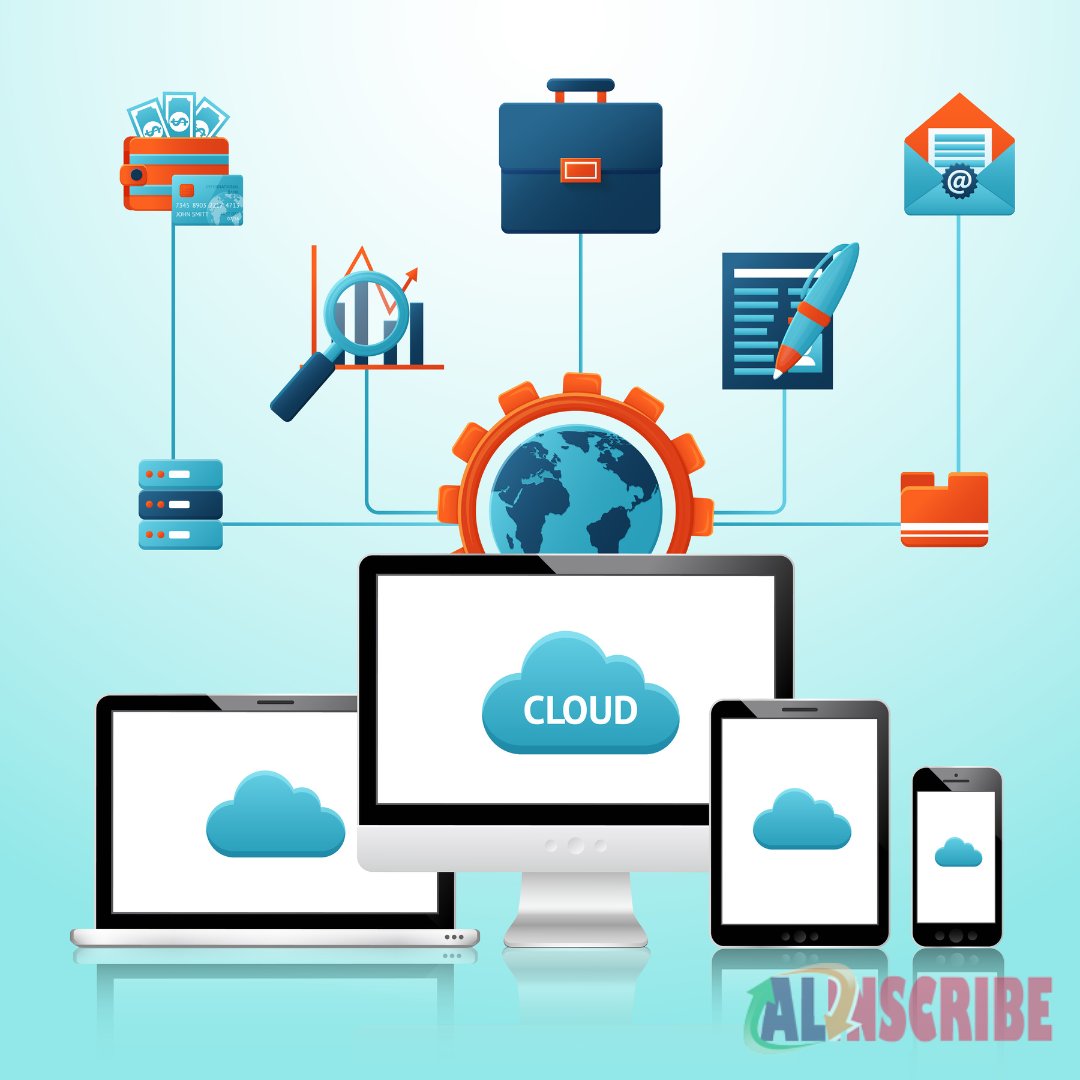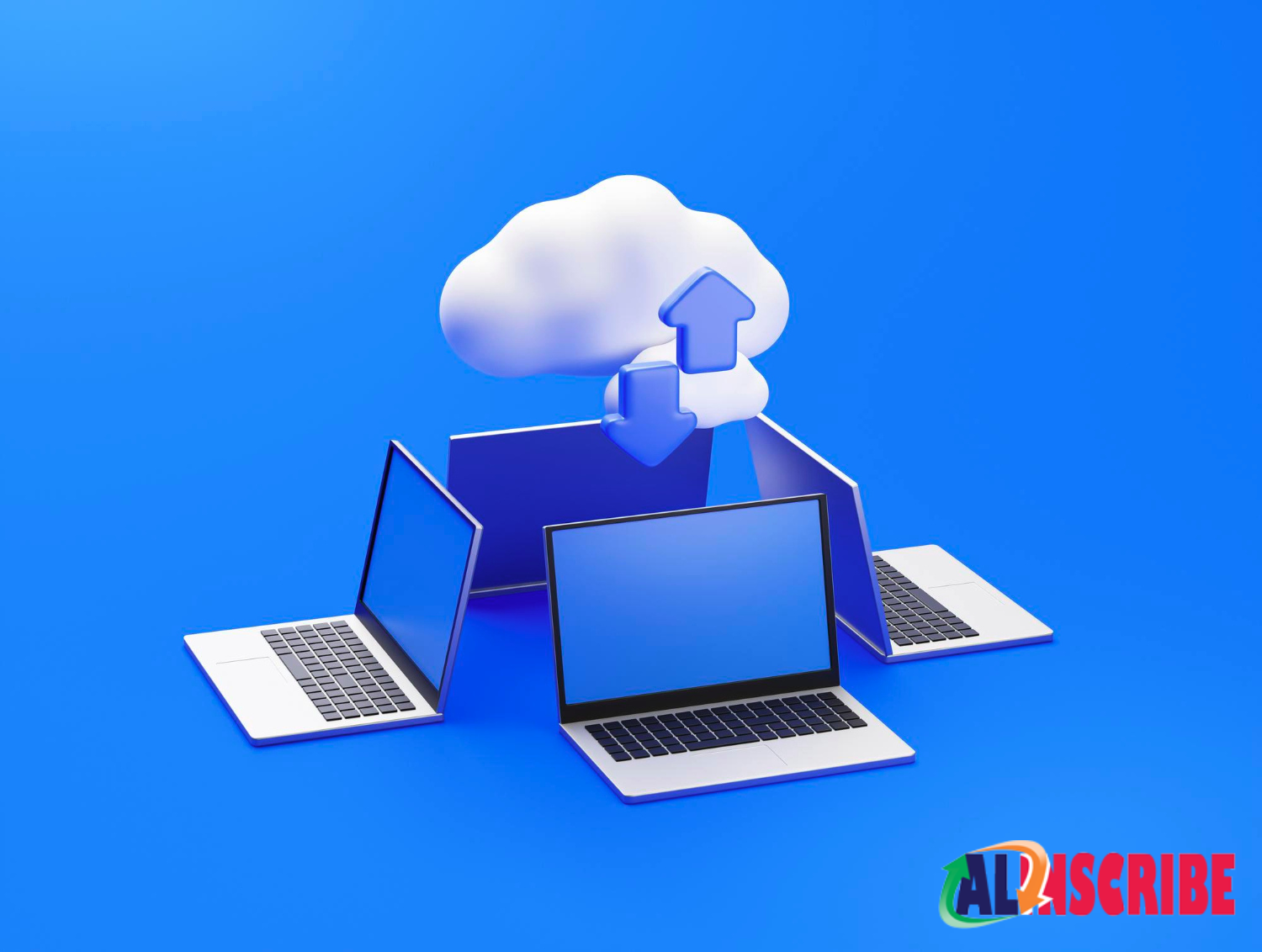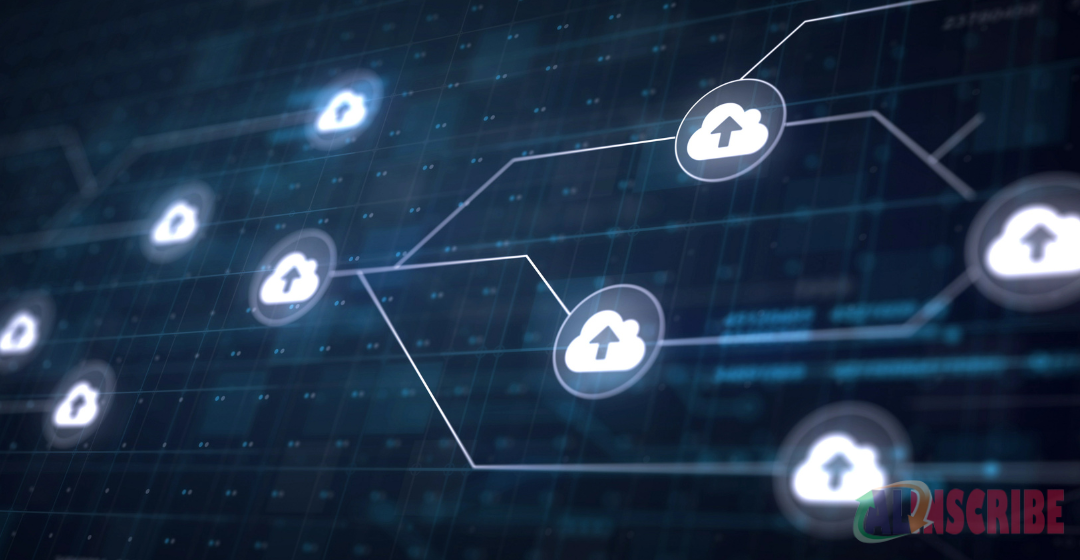10 Cloud Computing Security Factors That You Need To Know In 2025

Now-a-days cloud computing has become a household term. Imagining a day without having to access to cloud, is almost nightmarish in professional field and sometimes in personal life as well. Now before getting into the 10 cloud computing security factors let’s get to know what cloud computing actually is.
What is cloud computing?
Cloud computing is a juncture of hardware, software and storage, hosted over the internet to offer seamless deployment and synchronization. Cloud computing services offer flexible resources, innovative approaches and affordable solutions over the course of internet. Businesses can pay for the cloud services they use, which lowers operating costs making the businesses run smoothly.
What is cloud computing security?
The practice of protecting cloud-based system is referred as cloud computing security. The primary work of cloud computing security is to protect cloud-based systems with the help of controls, policies and technologies. Cloud computing security methodologies include some complicated factors, which are also the primary topic of discussion of this article.

So, without any delay let’s get into the 10 cloud computing security factors that everyone should know:
1. Access management:
In the cloud, access management is paramount. It ensures that only authorized users have the right level of access to specific resources. This is achieved through Identity and Access Management (IAM) systems.
Key aspects of access management in the cloud:
- Authentication: Verifies the identity of users, often using multi-factor authentication for enhanced security.
- Authorization: Determines what a user is allowed to do, granting permissions to specific resources and actions.
- Least Privilege: A core principle where users are only granted the minimum necessary access to perform their duties.
- Centralized Control: IAM systems provide a single point for managing access across the entire cloud environment.
- Monitoring and Auditing: Track user activity and access attempts to detect anomalies and potential threats.
Benefits of robust access management:
- Data Protection: Prevents unauthorized access to sensitive data, reducing the risk of breaches.
- Compliance: Helps meet regulatory requirements by demonstrating control over data access.
- Improved Security Posture: Minimizes the impact of compromised accounts by limiting the scope of access.
- Operational Efficiency: Streamlines user onboarding and offboarding processes.
Access management is a fundamental component of cloud computing security. By implementing a strong IAM framework, organizations can effectively control who accesses their resources, ensuring data protection and compliance in the cloud.
2. Encryption
Encryption is a cornerstone of cloud computing security, ensuring data confidentiality and integrity. It transforms readable data into an unreadable format, protecting it from unauthorized access even if a breach occurs.
Key aspects of encryption in cloud computing security:
- Data at rest: Encryption safeguards stored data in databases, servers, and storage systems.
- Data in transit: Encryption protects data during transmission between locations, such as from a user's device to a cloud server.
- Key management: Securely managing encryption keys is crucial to prevent unauthorized decryption.
Benefits of encryption:
- Data protection: Prevents unauthorized access to sensitive information.
- Compliance: Helps meet regulatory requirements for data privacy and security.
- Reduced risk: Minimizes the impact of data breaches and cyberattacks.
- Customer trust: Demonstrates a commitment to data security and privacy.
Challenges of encryption:
- Performance overhead: Encryption and decryption processes can impact system performance.
- Complexity: Implementing and managing encryption can be complex, requiring expertise.
- Key management: Securely managing encryption keys is crucial but challenging.
Best practices for encryption in the cloud:
- Encrypt data at rest and in transit.
- Use strong encryption algorithms and key lengths.
- Implement robust key management practices.
- Regularly review and update encryption policies.
- Consider using a cloud-based encryption service.
By implementing strong encryption practices, organizations can significantly enhance their cloud computing security posture and protect their sensitive data from unauthorized access.
3. Compliance:
Compliance plays a crucial role in cloud computing security, ensuring that organizations adhere to industry regulations and standards. It involves implementing security measures to protect sensitive data and maintain customer trust.
Key aspects of compliance in cloud computing security:
- Data protection: Compliance frameworks like GDPR and HIPAA mandate strict data protection measures, including encryption, access controls, and data loss prevention.
- Security audits: Regular audits help identify vulnerabilities and ensure that security controls are effective.
- Incident response: Compliance requires organizations to have incident response plans in place to address security breaches and data leaks.
- Vendor management: Organizations must ensure that their cloud service providers also comply with relevant regulations and standards.
By prioritizing compliance, organizations can minimize risks, maintain customer trust, and avoid legal penalties.
4. Information Privacy
Information privacy holds a very important place in cloud computing security. It refers to the practice of protecting sensitive user data that are stored on the cloud platforms. The protection works against unauthorized access, disclosure or misuse. Information privacy ensures that the users have the ultimate control over their personal information when it’s hosted in the cloud.
Key aspects of information privacy in cloud computing security: -
- Data Protection: The primary focus of data protection is safeguarding personal data as in names, addresses, financial information and health records.
- User Control: the users, individuals are the ultimate controller of their own data.
- Compliance with Regulations: Adhering to data privacy laws like GDPR (General Data Protection Regulation) and CCPA (California Consumer Privacy Act).
- Data anonymization: Removing identifiable details from data where possible to protect individual privacy.
- Auditing and monitoring: Continuously tracking data access and usage to identify suspicious activity.

5. Visibility:
In cloud computing security, visibility is another crucial factor. It's the ability to see and understand everything happening within your cloud environment. This includes:
- Asset Visibility: Knowing what data and applications you have, where they're located, and who has access.
- Activity Visibility: Tracking user behaviour, network traffic, and application performance to detect anomalies.
- Threat Visibility: Identifying potential security risks, vulnerabilities, and ongoing attacks in real-time.
Without visibility, you're essentially operating in the dark. You can't effectively protect what you can't see, making your organization vulnerable to data breaches, cyberattacks, and compliance violations.
Why is visibility crucial?
- Proactive Security: Enables early detection of threats, preventing them from escalating into major incidents.
- Incident Response: Facilitates faster and more effective incident response by providing crucial context and insights.
- Compliance: Helps meet regulatory requirements by demonstrating control and understanding of your data.
- Optimization: Improves performance and resource allocation by identifying inefficiencies and bottlenecks.
How to achieve visibility?
- Centralized Logging: Collect and analyse logs from all cloud services and applications.
- Security Information and Event Management (SIEM): Use SIEM tools to correlate events and identify suspicious patterns.
- Cloud computing security Posture Management (CSPM): Implement CSPM solutions to continuously assess and improve your security posture.
- Threat Intelligence: Integrate threat intelligence feeds to stay ahead of emerging threats.
By prioritizing visibility, you can gain a comprehensive understanding of your cloud environment, enabling you to proactively identify and mitigate security risks, ensuring the safety and integrity of your data.
6. Data Loss Prevention (DLP):
Data Loss Prevention (DLP) is a critical cloud computing security factor, safeguarding sensitive data from unauthorized access or exfiltration. In the cloud era, organizations face the challenge of protecting data across diverse environments, including SaaS applications, cloud storage, and endpoints. Cloud-based DLP solutions offer a centralized approach to monitor and control data, ensuring compliance with regulations like GDPR and HIPAA.
DLP solutions identify and classify sensitive data, such as PII, financial records, and intellectual property. They then enforce policies to prevent data leakage, whether intentional or accidental. This can involve blocking data transfers, encrypting sensitive information, or redacting confidential elements. Cloud DLP solutions offer scalability and flexibility, adapting to evolving business needs and data volumes.
By implementing DLP in the cloud, organizations gain visibility into their data landscape, identify vulnerabilities, and proactively mitigate risks. This strengthens their security posture, protects their reputation, and fosters customer trust.
7. Account Hijacking Prevention
Accounting hijacking is a serious cloud computing security risk where attackers gain unauthorized access to an organization's accounting systems. This can lead to financial theft, data breaches, and reputational damage. Attackers may use phishing, malware, or exploit vulnerabilities to steal credentials or gain access. Once inside, they can manipulate financial records, transfer funds, or steal sensitive data.
To mitigate this risk, organizations should implement strong security measures. This includes multi-factor authentication, strong passwords, and regular security audits. Employee training on phishing and social engineering tactics is crucial. Additionally, monitoring account activity for suspicious behaviour and promptly addressing security vulnerabilities can help prevent accounting hijacking. Cloud providers also offer security features that organizations should utilize to protect their data and systems.
8. Advanced threat detection
Using sophisticated technologies and methods to identify and analyse potential cyber threats, which can easily bypass traditional security measures, such as firewalls and antivirus software. Within cloud interface, it is possible to implement advanced security measures such as machine learning and behavioural analysis. These kind of advanced security measures easily detect and mitigate advanced attacks before any kind of damage occurs.
Key aspects associated with advanced threat detection in cloud computing:
- Behavioural analysis: This technique monitors the behaviour of applications and network traffic to identify anomalies that could indicate malicious activity.
- Machine Learning and AI: Advanced machine learning can easily identify patterns and trends that lead to cyber crime.
- Malware Sandboxing: Suspicious files are isolated in a controlled environment (sandbox) to analyse their behaviour without affecting the live system.
- User and entity behaviour analytics (UEBA): Monitoring user activity to detect unusual patterns that could indicate a compromised account.
9. Incident response plan:
Incident response plan is a set of procedures that outlines how a company should respond to and manage security threats that can seriously disrupt their cloud environment. Incident response plan includes identifying the issues, taking corrective actions, restoring normal operations and more.
Typical Cloud Response Plan phrase:
- Preparation
- Detection and analysis
- Containment
- Eradication
- Recovery
- Post-incident Review
10. Cost savings:
Cost savings in cloud computing refers to the financial benefits businesses can achieve by utilizing cloud services instead of maintaining their own on-premises IT infrastructure, leading to reduced expenses on hardware purchases, software licenses, maintenance, and staff needed to manage physical servers, thus allowing them to pay only for the resources they actually use on a pay-as-you-go basis.
Key aspects of cloud cost savings:
- No hardware cost since everything is kept in the cloud storage
- Better scalability and elasticity are offered in the form of a Pay-as-you-go model
- Reduction in operational cost
- Optimized resource utilization
- Pay for only what you consume

Challenges in Cloud computing security:
Alongside the development of cloud computing security, the challenges and threats have increased and evolved a lot. Even though cloud service providers regularly update and enhance the security measures – there are always certain loopholes that stay open and create the perfect opportunity for hackers or other dishonest individuals to take advantage.
In this section of the article, we will go through some of the most common cloud computing security challenges and learn how those challenges can be mitigated.
1. Misconfiguration:
Misconfiguration refers to the failure of setting up applications and software properly. Users sometimes are not that technically advanced, which leads to misconfiguration and leaves the doors of vulnerability open to the hackers. In this scenario, the only way to prevent misconfiguration is by educating the users and letting them know the best way to protect their data appropriately.
2. Unauthorized Access:
Storing data in cloud and being able to access it over internet is as convenient as it is vulnerable. The cloud computing security threats can include malware attacks, theft of data and unauthorized access to user data. Using two factor authentication is one of the best ways of preventing unauthorized access.
3. Account Hijacking:
Account hijacking happens when someone takes over your account and gains the access to your personal information and other important things. To prevent account hijacking, you need to make sure that you don’t share your account info and credentials in any third-party platform. Protect your account with security questions or other security tools.
Conclusion:
There will always be certain threats and vulnerabilities, but alongside the threats, cloud computing security will strengthen too. Hence, there is no need to be afraid. Trusting your cloud service provider and learning what is the best way of protecting your own account is an effective way of combating the threats. Always stay wary of sharing too much of your account info and use as little third-party applications as possible.
Article Comments
Similar Articles
Articles Search
Sponsor
There are zero sub-categories in this parent category.
There are zero sub-categories in this parent category.
There are zero sub-categories in this parent category.
















